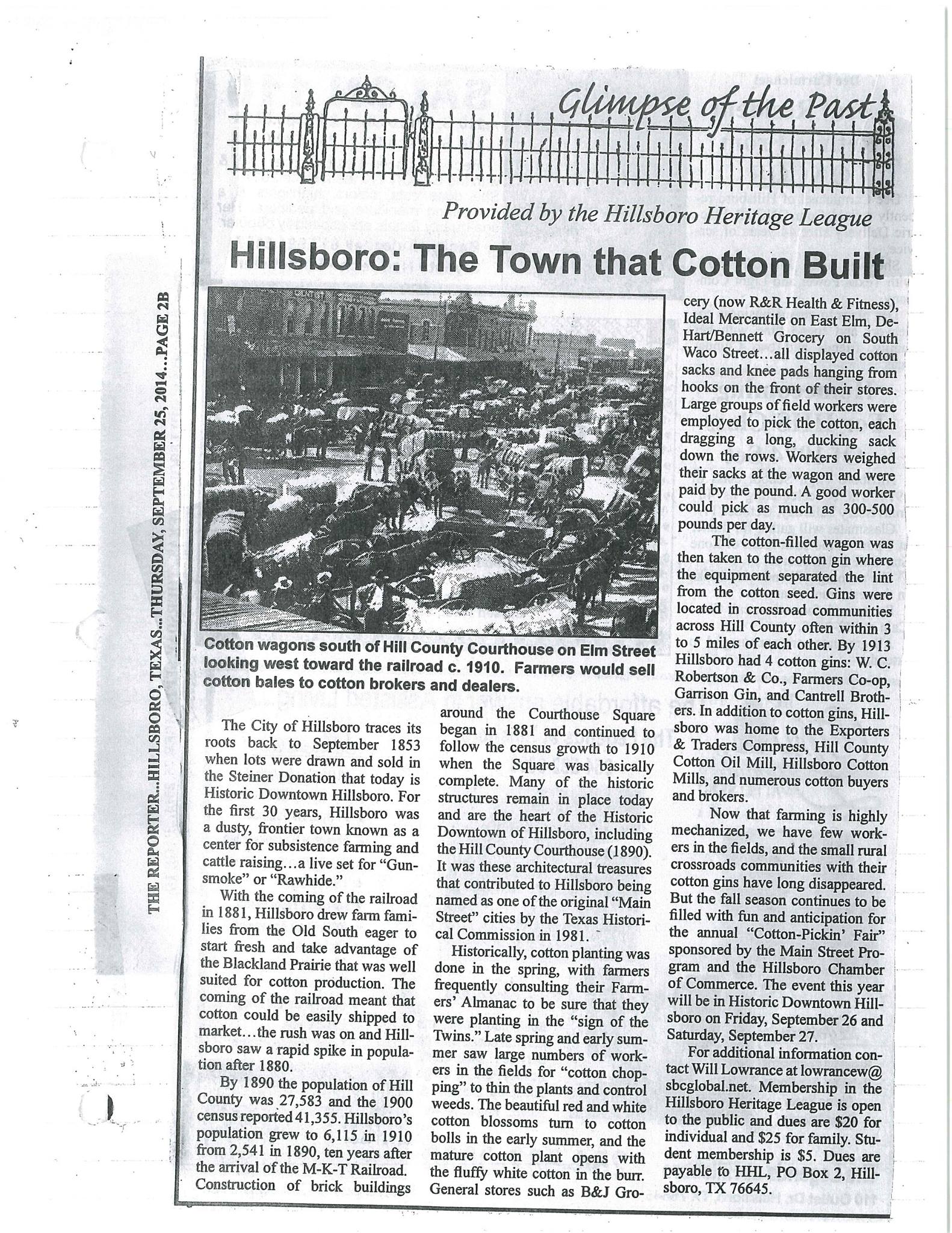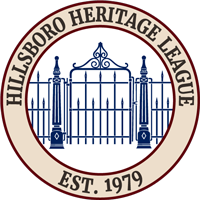The Town that Cotton Built
Glimpse of the Past: Sept 25, 2014
Hillsboro: The Town that Cotton Built
The City of Hillsboro traces its roots back to September 1853 when lots were drawn and sold in the Steiner Donation that today is Historic Downtown Hillsboro. For the first 30 years, Hillsboro was a dusty, frontier town known as a center for subsistence farming and cattle raising...a live set for "Gunsmoke" or "Rawhide."
With the coming of the railroad in 1881, Hillsboro drew farm families from the Old South eager to start fresh and take advantage of the Blackland Prairie that was well suited for cotton production. The coming of the railroad meant that cotton could be easily shipped to market... the rush was on and Hillsboro saw a rapid spike in population after 1880.
By 1890 the population of Hill County was 27,583 and the 1900 census reported 41,355. Hillsboro's population grew to 6,115 in 1910 from 2,541 in 1890, ten years after the arrival of the M-K-T Railroad. Construction of brick buildings around the Courthouse Square began in 1881 and continued to follow the census growth to 1910 when the Square was basically complete. Many of the historic structures remain in place today and are the heart of the Historic Downtown of Hillsboro, including the Hill County Courthouse (1890). It was these architectural treasures that contributed to Hillsboro being named as one of the original "Main Street" cities by the Texas Historical Commission in 1981.
Historically, cotton planting was done in the spring, with farmers frequently consulting their Farmers' Almanac to be sure that they were planting in the "sign of the Twins." Late spring and early summer saw large numbers of workers in the fields for "cotton chopping" to thin the plants and control weeds. The beautiful red and white cotton blossoms turn to cotton bolls in the early summer, and the mature cotton plant opens with the fluffy white cotton in the burr. General stores such as B&J Grocery (now R&R Health & Fitness), Ideal Mercantile on East Elm, DeHart/Bennett Grocery on South Waco Street... all displayed cotton sacks and knee pads hanging from hooks on the front of their stores. Large groups of field workers were employed to pick the cotton, each dragging a long, ducking sack down the rows. Workers weighed their sacks at the wagon and were paid by the pound. A good worker could pick as much as 300-500 pounds per day.
The cotton-filled wagon was then taken to the cotton gin where the equipment separated the lint from the cotton seed. Gins were located in crossroad communities across Hill County often within 3 to 5 miles of each other. By 1913 Hillsboro had 4 cotton gins: W.C. Robertson & Co., Farmers Co-op, Garrison Gin, and Cantrell Brothers. In addition to cotton gins, Hillsboro was home to the Exporters & Traders Compress, Hill County Cotton Oil Mill, Hillsboro Cotton Mills, and numerous cotton buyers and brokers.
Now that farming is highly mechanized, we have few workers in the fields, and the small rural crossroads communities with their cotton gins have long disappeared. But the fall season continues to be filled with fun and anticipation for the annual ''Cotton-Pickin' Fair" sponsored by the Main Street Program and the Hillsboro Chamber of Commerce.
CAPTION: Cotton wagons south of Hill County Courthouse on Elm Street looking west toward the railroad c. 1910. Farmers would sell cotton bales to cotton brokers and dealers.

